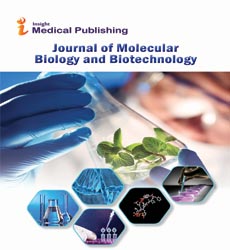Nano-Biotechnology: Another Way to Deal with Treat and Forestall Intestinal Sickness
Takehiko Kaneko*
Department of Biotechnology, Suwa University of Science, Toyohira, Japan
- *Corresponding Author:
- Takehiko Kaneko
Department of Biotechnology,
Suwa University of Science,
Toyohira,
Japan,
E mail: kanekoTakeh017@suwa.ac.jp
Received Date: March 07, 2021; Accepted Date: March 21, 2021; Published Date: March 28, 2021
Citation: Kaneko T (2021) Nano-biotechnology: Another Way to Deal with Treat and Forestall Intestinal Sickness. J Mol Biol Biotech Vol.6 No. 2:e002.
Abstract
Malaria, the exterminator of 1.5 to 2.7 million living souls yearly, is an infamous infection known all through the world. The destruction of this infection is troublesome and a test to researchers. Vector disposal and compelling chemotherapy for the patients are key strategies to be utilized in the battle against intestinal sickness. Be that as it may, drug opposition and ecological and social concerns are the principle jumps in this battle against intestinal sickness. Conquering these limits is the significant test for the 21st century malarial analysts. Adjusting the standards of Nanobiotechnology to both vector control and patient treatment is the lone answer for the issue. A few mixtures like lipids, proteins, nucleic corrosive and metallic Nanoparticles (NPs) have been effectively utilized for the control of this deadly jungle fever sickness. Other valuable characteristic reagents like organisms and their items, sugars, nutrients, plant separates and biodegradable polymers are additionally used to control this infection.
Keywords
Malaria; Vectors; Chemotherapy; Drug resistance; Nano-biotechnology
Editorial Note
Intestinal sickness is the most critical and pernicious of the relative multitude of parasitic human illnesses. The causal specialist of jungle fever is the single cell protozoa called Plasmodium. Protozoa vector-borne sicknesses are most wellknown diseases in creating areas and result in excess of 1,000,000 passing from intestinal sickness consistently worldwide. According to the WHO, jungle fever is one of the world's most deadly infections which caused 214 million new contaminations and almost 438,000 jungle fever related passing in 2015 around the world.
In excess of 216 million individuals are as yet contaminated by the malarial parasite every year. The application of these bug sprays, notwithstanding, has diminished the yearly parasite record Annual parasite Index (API) radically all through the world. The decrease in API has invigorated the WHO to create and execute different control strategies. Many analysts are engaged with controlling and focusing on the grown-up female at its larval stages.
New multifunctional devices and plans for higher biochemical assessment with extraordinary characteristics, like better affectability, explicitness and a higher pace of acknowledgment, have been delivered through the use of sub-atomic science with designing. "Nano" is a Greek word which implies little or diminutive person. Essentially, NPs can be characterized as the particles, which range in size from 1 to 100 nm one or the other way, and can be viewed as up to a few 100 nm.
Nano-biotechnology is, consequently, a blend of both designing and atomic science. Nanotechnology has upset the world with nano-objects which incorporate nanotubes, nanochannels, nanoparticles, nano-pores and nano-capacitors. These nano-objects have critical insightful applications on the planet. Nano-biotechnology can likewise be characterized as the intersection of nanotechnology and biotechnology, which means to make, improve, and use nanoscale structures for cutting edge biotechnology.
Open Access Journals
- Aquaculture & Veterinary Science
- Chemistry & Chemical Sciences
- Clinical Sciences
- Engineering
- General Science
- Genetics & Molecular Biology
- Health Care & Nursing
- Immunology & Microbiology
- Materials Science
- Mathematics & Physics
- Medical Sciences
- Neurology & Psychiatry
- Oncology & Cancer Science
- Pharmaceutical Sciences
